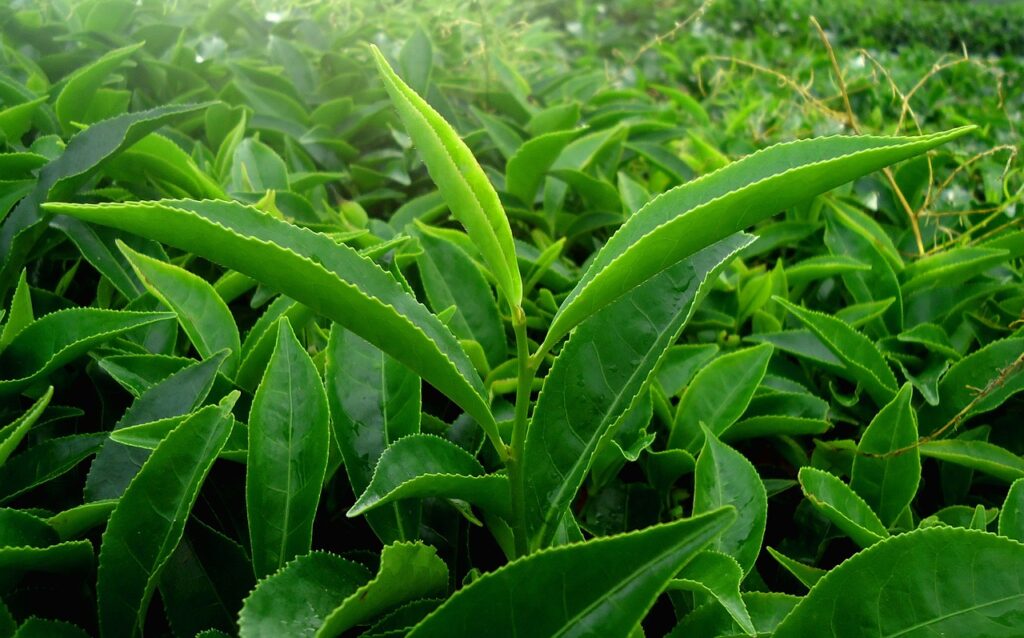
Green tea is a fantastic, scientifically proven, healthy, refreshing, and energizing drink. It’s a cultural icon, a health elixir, and a symbol of tranquillity. This natural plant drink became popular in Asia thousands of years ago and is growing worldwide.
In this one page, I will cover all aspects of Green Tea, setting the stage for a comprehensive journey through its rich history, diverse types, health benefits, and much more. From the careful cultivation of green tea plants to the precise processing methods, the journey of green tea from leaf to cup is a fascinating process that contributes to its unique characteristics and health benefits.
Origin of Green Tea
The origin of tea is associated with China .According to Chinese legend, the discovery of tea dates back to 2737 BC, when Emperor Shen Nong purportedly tasted water that had leaves from a wild tea bush blown into it.However, the first credible records of tea consumption in China appear during the Tang dynasty (618-907 AD), where it was celebrated in the “Cha Jing” (The Classic of Tea,by Lu Yu). During the Song dynasty (960-1279 AD), powdered tea became popular in China, a practice that laid the groundwork for the Japanese tea ceremony.
Japan & Korea
Later , the use of tea pread to Japan and other Asian countries, thanks to spread of Buddhism.Buddhist monks in the 9th century helped its spread to Japan. Over time, it became an integral part of Japanese culture, especially in the form of matcha.In Japan, tea evolved from a luxury item for the elite to a widespread beverage enjoyed by all social classes, especially with the advent of Sencha (steamed green tea) in the 18th century.
Similarly, in Korea, tea was introduced by Chinese monks and became a part of Korean rituals. Other neighboring countries like Vietnam also adopted tea into their culture, each developing unique brewing methods and ceremonies.
European Spread !
Portuguese priests and merchants touring China during the 16th century, eventually brought tea to Europe, which become a valuable commodity. While initially popular, green tea eventually gave way to black tea in Europe, particularly in Britain, due to factors like longer shelf life and brewing habits.
Part of Asian Culture
Green tea remains central to many cultural ceremonies in Asia. For example,tea ceremonies in Japan are highly ritualized practice of preparing and presenting matcha.In some cultures, these tea practices have been recognized as intangible cultural heritages, underscoring their importance.
Green Tea Manufacturing
The making of green tea is an art that has been refined over centuries, with each step in the process crucial to the development of the tea’s flavor, aroma, and color.
The journey of manufacture of Green tea starts from the plantaion of Camellia sinensis plant. This variety of tea plant thrives in subtropical climates which include high altitudes, frequent mist, and a good balance of sunshine and rainfall.
Different varieties of the Camellia sinensis plant are cultivated based on the desired characteristics of the final tea product. Some teas, like matcha, require specific cultivars.
Similaraly , harveting time affect the quality and taste of tea.The first flush (first harvest of the year) usually yields the highest quality leaves. Traditional methods often involve hand-picking the top two leaves and the bud.
For certain teas like matcha and gyokuro, process is to shade tea plants for several weeks before harvesting. This increases chlorophyll levels and amino acids, contributing to a richer flavor.
7 Steps of Tea Processing
Green tea production is a blend of tradition and technology, with each step meticulously carried out to ensure the highest quality.The processing steps include steaming the tea plants ,rolling ,drying ,sorting and grading the tea.
- Immediately after harvesting, the leaves are either steamed (Japanese method) or pan-fired (Chinese method). Steaming halts oxidation and preserves the green color, while pan-firing gives a more roasted flavor.
- The leaves are then rolled into various shapes. This step also breaks down the cells within the leaves, enhancing the flavor and aroma.
- Finally, the leaves are dried to remove moisture, which stops enzymatic activity and stabilizes the green tea for storage.
- The tea is sorted and graded based on leaf size, shape, and color. Higher grades of tea have uniform leaves and a more vibrant color.
- Some teas undergo additional steps, like grinding in the case of matcha, to achieve the desired final product.The Matcha variety of green tea requires a unique process where the dried leaves are de-veined and de-stemmed before being stone-ground into a fine powder. This retains the nutrients and allows the whole leaf to be consumed.
- Proper packaging is crucial to maintain the tea’s freshness, flavor, and aroma. Vacuum-sealing and using opaque containers helps protect the tea from air, light, and moisture.
- Finally , the Green tea is kept in a cool, dry place away strong odors from direct sunlight.
10 Famous Types of Green Tea
There are many varities of Grean tea , but following are the most
- Sencha is the Japan’s most popular tea. The Sencha variety is bright, refreshing, and slightly grassy, with a balance of sweetness and bitterness.
- Matcha is another vibrant green powder made from ground, shade-grown tea leaves, offering a rich, creamy body with a sweet, umami flavor.
- Dragon Well is a Chinese green tea variety with a flat, smooth leaf appearance known for its mellow, slightly sweet, and nutty taste.
- Gyokuro is a shade-grown like Matcha in Japan. Gyokuro tea is prized for its rich sweetness and umami, with a smooth, full-bodied taste.
- Biluochun is a Chinese green tea with tightly curled leaves, known for its delicate, floral aroma and light, fruity flavour.
- Hojicha is a roasted green tea with a reddish-brown color, offering a toasty, caramel-like flavour and lower in caffeine.
- Genmaicha: A blend of green tea and roasted brown rice, Genmaicha has a unique, nutty flavour and a refreshing finish.
- Mao Feng is a high-grade green tea that is a bit sweet with a floral aroma. This type of tea plant is characterized by its slender, wiry leaves.
- Pi Lo Chun is also known as “Green Snail Spring,” it’s known for its spiral-shaped leaves, gentle aroma, and fruity, floral taste.
- Tamaryokucha is A curled, pan-fired green tea offering a tangy, slightly citrusy with a hint of smokiness.
Green Tea Health Benefits
Green tea, renowned for its health-promoting properties, is more than just a soothing beverage. Many scientific studies have established its potential benefits for various aspects of health. Health benefits like
- Enhancing immunity,
- Better mental health,
- Glowing skin and
- its use in lowering body weight has been established.
The scientific communites are constantly probing the benefits of drinking green tea.

